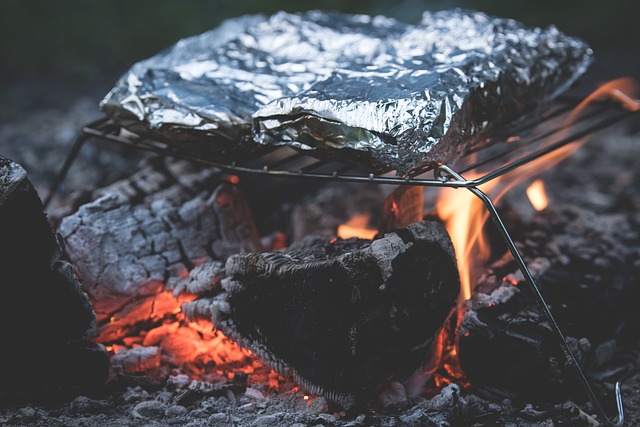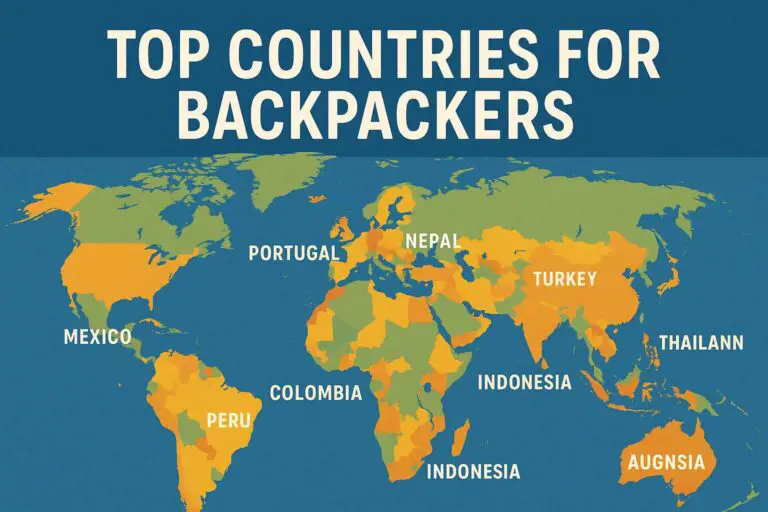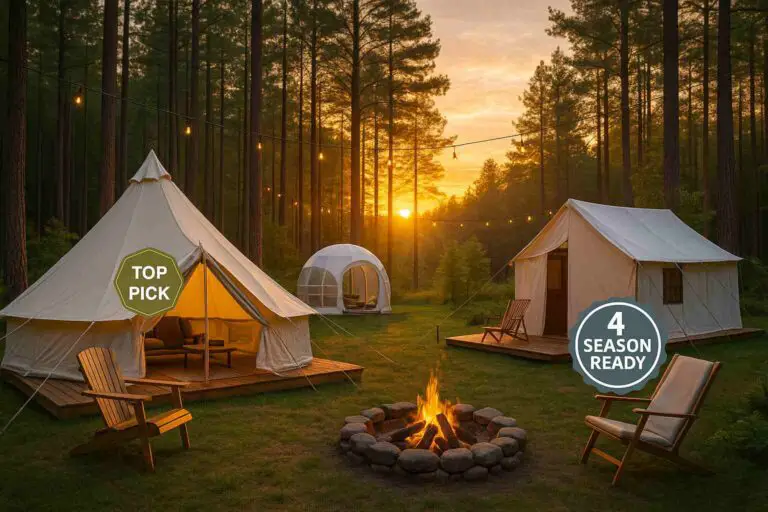Cooking during camping trips can be an exciting and rewarding experience, allowing you to enjoy delicious meals while immersing yourself in nature. However, when rain decides to make an appearance, it can pose some unique challenges. Nevertheless, with the right knowledge and preparation, you can still cook fantastic meals even in wet weather conditions. In this comprehensive guide, I will explore the art of cooking when camping in the rain.
I’ll provide you with expert advice and tips to ensure that your rainy cooking adventures are successful and enjoyable. From planning your meals to setting up a rain-proof cooking area, building and maintaining fires, employing cooking techniques, ensuring food safety, and dealing with emergency situations, I’ve got you covered.
By the end of this article, you’ll be equipped with the knowledge and confidence to handle cooking in the rain like a seasoned camping chef. So, let’s dive in and discover how to make the most of your camping culinary experience, regardless of the weather conditions!
Preparing for Rainy Cooking Adventures
Cooking in the rain requires careful preparation to ensure a smooth and enjoyable experience. By following these steps, you’ll be ready to tackle any wet weather that comes your way.
Choosing the Right Campsite
- Consider elevation and terrain: Look for a campsite that is situated on higher ground to avoid potential flooding. Avoid areas prone to collecting water, such as depressions or valleys.
- Seek sheltered areas: Look for campsites near trees or natural formations that can provide some protection against rain and wind. This will help create a more comfortable cooking environment.
Checking Weather Forecasts
- Reliable sources for weather updates: Use trusted weather forecast platforms, such as online weather services or dedicated camping apps, to stay informed about the expected weather conditions during your camping trip.
- Understanding weather patterns and alerts: Familiarize yourself with weather patterns in the area you’ll be camping in. Pay attention to weather alerts or warnings and plan accordingly.
Essential Camping Equipment for Rain Cooking
- Waterproof tent or tarp: Ensure that your tent or tarp is properly waterproofed to keep you and your cooking area dry.
- Sturdy cooking gear and utensils: Invest in high-quality, durable cooking equipment that can withstand wet conditions. Opt for stainless steel or cast iron cookware that won’t rust.
- Waterproof matches or fire starters: Keep your fire-starting tools dry by using waterproof matches or investing in a reliable fire starter kit.
- Portable stove or grill: Consider using a portable camping stove or grill that is designed to be used in various weather conditions. Look for models that have windshields to protect the flame from gusts of wind.
- Water-resistant food storage options: Choose waterproof or water-resistant containers to store your food and cooking ingredients. Ziplock bags or airtight plastic containers are ideal for keeping food dry.
Planning Rain-Friendly Meals
When cooking in the rain, it’s important to choose meal ideas that are practical, delicious, and easy to prepare. Here are some meal-planning tips specifically tailored for wet weather conditions:
Meal Ideas that Suit Wet Weather
- One-pot wonders: Opt for meals that can be cooked in a single pot or pan, minimizing the number of dishes to clean. Examples include hearty stews, soups, chili, or pasta dishes.
- Foil packet meals: Prepare individual meal packets using aluminum foil. Fill them with a variety of ingredients such as seasoned meat, vegetables, and spices. Seal the packets tightly and cook them over the fire or on a grill.
- Skewers and kabobs: Thread marinated meat, seafood, or vegetables onto skewers for a quick and easy cooking method. They can be grilled over an open fire or on a portable stove.
Packing Appropriate Ingredients
- Non-perishable and easy-to-store foods: Choose ingredients that are long-lasting and require minimal refrigeration. Canned goods, dried fruits, nuts, rice, and pasta are great options.
- Pre-cut and pre-marinated ingredients: Prepare your ingredients in advance to minimize the amount of chopping and seasoning required on-site. This saves time and effort while ensuring you have flavorful ingredients ready to go.
- Suitable cooking oils and spices: Pack small, waterproof containers of cooking oils, spices, and seasonings to add flavor to your meals. Consider versatile options like olive oil, salt, pepper, and dried herbs.
Setting Up a Rain-Proof Cooking Area
Creating a rain-proof cooking area is essential to protect yourself, your cooking equipment, and your food from the elements. Here are some tips to help you set up a sheltered cooking space:
Utilizing Tarps or Awnings for Shelter
- Proper tarp setup techniques: Ensure you have an adequate-sized tarp to cover your cooking area. Use ropes, bungee cords, or adjustable straps to secure the tarp tightly. Create a sloping angle to allow rainwater to run off easily.
- Positioning for maximum protection: Set up your cooking area under natural shelters like trees or cliffs, if available. Position your tarp or awning to block rain and wind from entering your cooking space.
Building a Makeshift Windbreak
- Using rocks or logs: Arrange rocks or logs around the cooking area to create a barrier against gusts of wind. This will help maintain a steady flame and protect your food from being blown away.
- Creating a wind barrier with tarps or branches: If natural windbreaks are not available, use additional tarps or branches to create a solid wind barrier around your cooking area. Secure them firmly to prevent them from being dislodged by strong winds.
Building and Maintaining a Fire in the Rain
It is true that building a fire in wet conditions can be challenging, but with the right techniques, you can still enjoy the warmth and benefits of a campfire. Follow these steps to build and maintain a fire in the rain:
Choosing the Right Fire Pit Location
- Dry ground or elevated platforms: Look for an area with dry ground or create an elevated platform using rocks or logs to keep your fire off wet surfaces.
- Safety considerations: Ensure that the area surrounding your fire pit is clear of flammable materials like dry leaves or overhanging branches. Keep a safe distance from your shelter and any other structures.
Gathering Dry Firewood and Kindling
- Locating dry wood sources: Look for fallen branches or logs that are sheltered from rain, such as under dense tree canopies or in hollows. Dry deadwood found on standing trees may also be suitable.
- Preparing and storing firewood: Split larger pieces of wood to expose the dry interior. Store your firewood under a tarp or in a dry area before use.
Building a Rain-Resistant Fire
- Constructing a fire lay: Create a fire lay using a combination of dry tinder, kindling, and larger logs. Start with a base of small twigs or dry leaves, followed by progressively larger sticks and logs.
- Using fire starters or accelerants: To help ignite the fire in wet conditions, use waterproof fire starters, such as commercially available fire starter sticks or squares. You can also use natural accelerants like birch bark or dry pine needles.
- Maintaining the fire during rain showers: Add additional firewood gradually to maintain a steady flame. Keep extra dry firewood nearby in case you need to quickly replenish the fire during rain showers.
Remember to always prioritize safety when building and maintaining a fire. Keep a bucket of water or sand nearby to extinguish the fire completely before leaving the cooking area.
Cooking Techniques for Wet Conditions
When it comes to cooking in wet conditions during camping, there are various techniques you can employ to ensure successful and enjoyable meals. Here are some cooking methods suited for rainy weather:
Campfire Cooking Methods
- Dutch oven cooking: Utilize a Dutch oven, a heavy cast iron pot with a tight-fitting lid, to create delicious meals. The thick walls and tight seal help retain heat and moisture, making it ideal for slow-cooking stews, soups, casseroles, and even baking.
- Grilling over an open fire: Use a grill grate or a portable camping grill to cook meat, fish, vegetables, or skewers directly over the open flames. Keep the grill close to the fire for even heat distribution and use tongs or a spatula to flip the food.
Utilizing Portable Stoves or Grills
- Propane or butane stoves: Portable stoves powered by propane or butane can provide a reliable and adjustable heat source in wet conditions. Ensure the stove is placed on a stable surface and protected from direct rainfall.
- Safety precautions and fuel storage: Follow the manufacturer’s instructions for safe operation of the stove. Store fuel canisters in a dry and well-ventilated area, away from open flames or heat sources.
Tips for Efficient Cooking in the Rain
- Preparing ingredients in advance: Chop vegetables, marinate meat, and pre-measure ingredients at home to minimize prep time in wet conditions.
- Utilizing heat retention methods: Opt for dishes that can simmer for longer periods, allowing flavors to develop while maximizing fuel efficiency. Consider using insulated food covers or foil wraps to retain heat.
- Managing cooking time and temperature: Adjust cooking times and temperatures accordingly due to potential variations caused by rain, wind, or altitude. Use a reliable cooking thermometer to ensure food is cooked to the proper internal temperature.
Food Safety and Hygiene in the Rain
Maintaining proper food safety and hygiene practices is crucial, especially when cooking in wet conditions. Here are some important considerations to ensure the safety of your food:
Ensuring Proper Food Storage
- Waterproof containers and coolers: Store perishable food items in waterproof containers or coolers with ice packs to maintain their freshness and prevent contamination.
- Preventing cross-contamination: Keep raw meats, poultry, and seafood separate from other food items to avoid cross-contamination. Use separate cutting boards and utensils for raw and cooked foods.
Maintaining Personal Hygiene
- Handwashing techniques: Wash your hands thoroughly with clean water and soap before handling food, especially after touching raw meat, using the restroom, or handling any potentially contaminated items. Use hand sanitizer as an alternative when water is not available.
- Clean utensils and surfaces: Regularly clean and sanitize utensils, cutting boards, and cooking surfaces to prevent the spread of bacteria. Use biodegradable soap and hot water for effective cleaning.
Safe Drinking Water Options
- Boiling water: Boil water for at least one minute to kill any potential waterborne pathogens before consuming or using it for cooking.
- Filtering or purifying water: Use portable water filters or water purification tablets to ensure the safety of drinking water when camping. Follow the manufacturer’s instructions for proper usage.
Prioritizing food safety and maintaining proper hygiene practices will help prevent foodborne illnesses and ensure a safe camping experience for everyone involved.
Troubleshooting and Emergency Situations
Despite careful planning, unforeseen circumstances can arise during camping trips in the rain. Being prepared and knowing how to handle troubleshooting and emergency situations is essential. Here are some tips to help you navigate unexpected challenges:
Handling Sudden Downpours
- Immediate actions to protect the cooking area: If a sudden downpour occurs, quickly cover your cooking area with tarps or seek shelter under a sturdy tree or natural formation.
- Moving to alternative shelter if necessary: If the rain becomes too heavy or unsafe to cook outdoors, have a backup plan to move your cooking activities to a sheltered area like a camping gazebo or your tent.
Dealing with Equipment Malfunctions
- Quick fixes for stove or grill issues: If your stove or grill malfunctions due to rain, try drying off the ignition mechanism or using waterproof matches or a lighter as an alternative.
- Emergency fire-starting techniques: In case your fire is extinguished by rain, use dry tinder, fire starters, or fatwood to reignite it quickly. Shelter the fire from rain using your body or additional tarps.
Safety Reminders and Emergency Contacts
- First aid essentials: Always carry a well-stocked first aid kit that includes essentials such as bandages, antiseptic ointment, and pain relievers.
- Emergency communication devices: Have a reliable means of communication, such as a fully charged cellphone, a two-way radio, or a satellite phone, to reach out for help in case of emergencies.
Safety should be your top priority. If conditions become hazardous or unmanageable, prioritize your well-being and consider suspending cooking activities until the weather improves.
Conclusion
Cooking when camping in the rain may present some challenges, but with the right knowledge and preparation, it can be a rewarding and enjoyable experience.
When cooking in the rain while camping, choose a sheltered campsite, set up a rain-proof cooking area using tarps or awnings, and gather dry firewood. Use portable stoves or grills, employ one-pot meals or foil packet cooking, and prioritize food safety and hygiene. Adapt to the conditions, embrace the challenges, and enjoy delicious meals in the midst of nature’s beauty.
Get out there, embrace the rain, and cook up some fantastic meals during your camping adventures!
Your Next Read: Rainy Day Camping Activities For Adults








